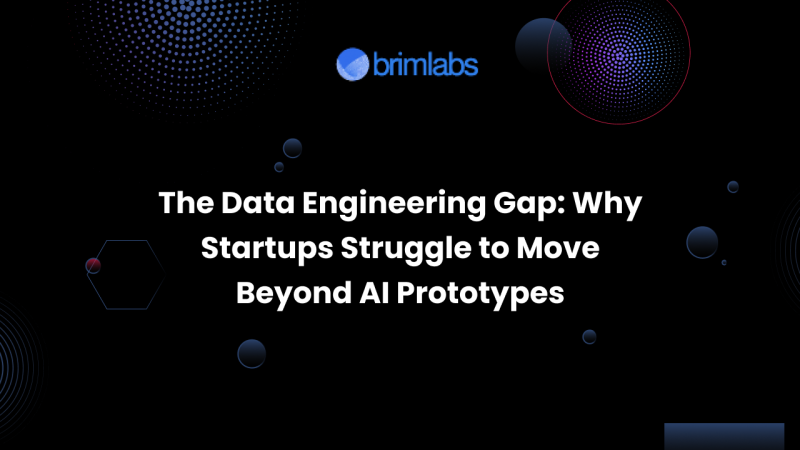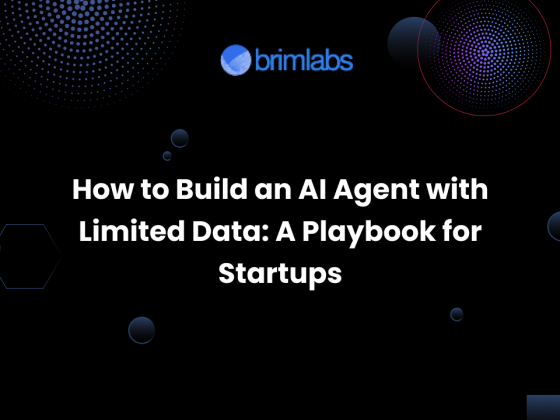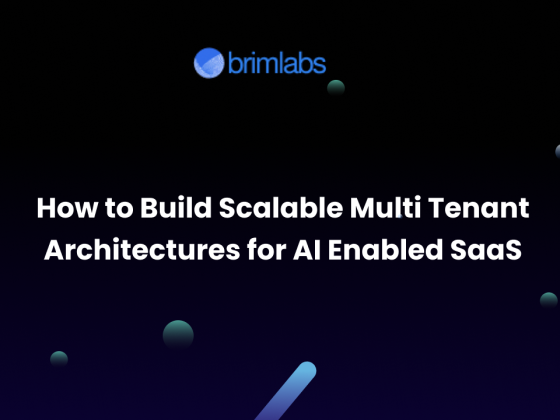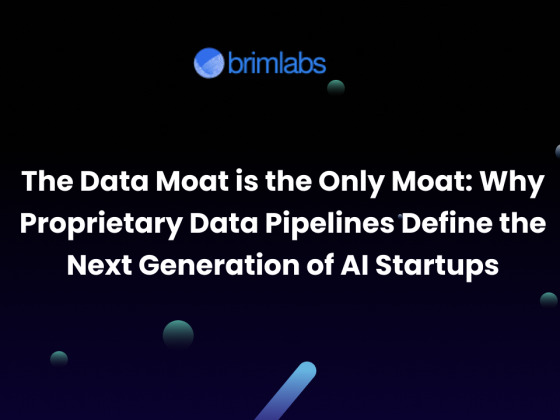In today’s AI-driven world, building a prototype is easier than ever. With open-source models, pre-trained APIs, and a growing number of no-code tools, many startups can build and demo an AI-powered MVP in weeks.
But while prototypes impress investors, they often crumble when startups try to deploy them in real-world environments.
The missing link? Data engineering.
While AI research gets the headlines, data engineering is the unsung backbone of every production-grade AI system. Without it, prototypes stay locked in demo-land, buggy, brittle, and non-scalable.
This blog explores why startups consistently underestimate data engineering, how this gap prevents them from scaling, and what they can do to bridge it.
The AI Prototype Problem
Startups often build fast, lean AI proofs-of-concept by relying on:
- Sample or static datasets
- Manual pre-processing scripts
- Local model inference
- One-off pipelines that aren’t built to scale or update
These demos may look functional but lack the robustness to:
- Handle large volumes of real-time data
- Ingest and clean new inputs dynamically
- Monitor, retrain, and version models
- Integrate into live backend systems or user-facing apps
When it’s time to go live, these limitations surface. Latency spikes. Data mismatches occur. Models behave inconsistently. The system becomes fragile.
What Exactly is the Data Engineering Gap?
Data engineering refers to the infrastructure, tooling, and processes that manage the flow of data through an AI system, from ingestion to storage to serving.
The gap emerges because:
- Startups prioritize model performance over data infrastructure
- Founding teams are often heavy on ML/AI talent but light on data engineers
- They rely on ad-hoc pipelines that break under real-world complexity
The result? A working model that can’t make the leap from dev environment to production without serious rework.
Common Symptoms of a Weak Data Stack
Startups facing the data engineering gap often experience:
- Slow onboarding of new data sources
- Inconsistent model outputs in different environments
- High manual effort in labeling, cleaning, and syncing data
- Lack of data lineage, versioning, or observability
- Failures in retraining workflows due to missing automation
Without a solid data backbone, AI becomes a black box. Debugging becomes guesswork. And product velocity drops.
Case Study: Why the Gap Hurts
Consider a healthtech startup building an AI model to triage patient messages.
- Their prototype, built on manually cleaned data, worked well.
- But in production, patient inputs had inconsistent formats, spelling errors, and new types of symptoms.
- The model failed to parse inputs it had never seen.
- Without automated validation, pipelines broke silently.
- The team had no retraining workflows tied to real-world feedback.
The AI didn’t just degrade, it stopped adding value. The issue wasn’t the model. It was the lack of mature data engineering practices.
Bridging the Gap: How to Move Beyond the Prototype
Startups that successfully scale AI products focus on data as infrastructure from day one. Here’s how they do it:
1. Build Streamlined Data Pipelines Early
Automate data ingestion, cleaning, transformation, and storage. Use tools like:
- Airbyte, Fivetran for extraction
- dbt, Apache Beam for transformations
- Snowflake, BigQuery, or Delta Lake for storage
Avoid hardcoded scripts, invest in modular, scalable pipelines.
2. Embrace Data Observability
Implement tools like Monte Carlo, Databand, or OpenMetadata to monitor:
- Data quality issues
- Schema changes
- Pipeline failures
- Anomalies in data freshness or completeness
Observability ensures your models don’t break silently.
3. Integrate Feature Stores
Centralize and reuse features across training and inference. Tools like Feast or Tecton help teams:
- Maintain consistent features
- Reduce duplication
- Enable online + offline parity for models
This minimizes training-serving skew and boosts model reliability.
4. Implement Continuous Training Pipelines
Automate retraining with pipelines that:
- Trigger on new data or model drift
- Validate new models with shadow deployments or A/B testing
- Version datasets and model checkpoints
Use orchestrators like Airflow, Dagster, or Prefect to manage this.
5. Hire (or Train) Data Engineers Early
Even one skilled data engineer can drastically improve:
- Data infrastructure reliability
- Speed of iteration
- Monitoring and scalability
Data engineers are not just support; they’re foundational to product success.
The Payoff: From Demos to Real Products
Startups that solve the data engineering gap:
- Deploy faster and more reliably
- Build trust with users by improving consistency
- Adapt to new data sources and user behaviors
- Lay the groundwork for multi-model architectures
- Attract better enterprise clients with robust infrastructure
The best AI product is one that works reliably in the real world. And that depends on data engineering, not just machine learning.
Conclusion
AI is only as good as the infrastructure behind it. Startups that want to move beyond prototypes must invest in their data foundations early. That means scalable pipelines, monitoring, retraining, and the right talent, not just clever models.
At Brim Labs, we specialize in helping AI startups bridge this exact gap, from one-off prototypes to production-ready systems. Whether you need help architecting data pipelines, setting up MLOps workflows, or building AI agents backed by scalable infrastructure, we’re here to help.











